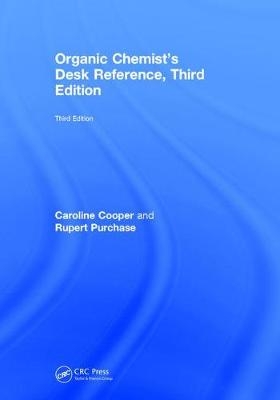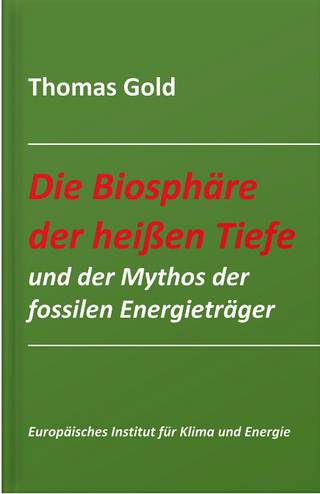
Organic Chemist's Desk Reference, Third Edition
CRC Press (Verlag)
978-1-138-06795-0 (ISBN)
- Titel ist leider vergriffen;
keine Neuauflage - Artikel merken
The Organic Chemistry Literature
Abstracting and Other Current Awareness Services
Principal Electronic Dictionaries and Chemical Compound Databases
Reference Works and Review Series
Patent Literature on the Web
Primary Journals
Electronic Sources for Chemistry Journals
Leading Publishers of Chemistry Journals and Chemical Information
Nomenclature Fundamentals
Introduction
IUPAC Nomenclature
General Principles of Nomenclature
Chemical Abstracts (CAS) Nomenclature
Types of Name
Constructing a Systematic Name
Azo and Azoxy Compounds
Tautomeric Compounds
Nomenclature Algorithms
Nomenclature of Ring Systems
Ring Systems (General)
Bridged Ring Systems
Heterocyclic Ring Systems
Spiro Compounds
Ring Assemblies
Ring Fusion Names
Stereochemistry
The Sequence Rule: R and S
Graphical and Textual Representations of Stereochemistry
Chiral Molecules with No Centres of Chirality
E and Z
The d,l-System
Descriptors and Terms Used in Stereochemistry
Graphical Representation of Organic Compounds
Zigzag Natta Projection
Stereochemistry
Structure and Nomenclature of Some Individual Classes of Compounds
Carbohydrates
Alditols and Cyclitols
Amino Acids and Peptides
Nucleotides and Nucleosides
Steroids
Lipids
Organoboron Compounds
Organophosphorus (and Organoarsenic) Compounds
Labelled Compounds
Infrared and Ultraviolet Spectroscopy
Infrared Spectroscopy
Ultraviolet Spectroscopy
Nuclear Magnetic Resonance Spectroscopy
Common Nuclei Used in NMR
Chemical Shift Data
Coupling Constants
Modern NMR Techniques for Structural Elucidation of Small Molecules
Determination of Structure by a Combination of IR and NMR
Mass Spectrometry
Introduction
Ionisation Techniques and Mass Spectrometer Systems
Interpreting Mass Spectra and Molecular Mass
Sample Introduction and Solvent Systems for Electrospray Mass Spectrometry
Common Adducts and Contaminants in Mass Spectra
MALDI Matrices
Fragment Ions and Neutral Losses
Natural Abundance and Isotopic Masses of Selected Isotopes and Nuclear Particles
Glossary of Abbreviations and Terms Commonly Used in Mass Spectrometry
Crystallography
Introduction
Definitions
Crystallographic Point Groups
Space Groups
Reciprocal Lattice
Examples of Organic Crystals
CIF Data Format
Bragg’s Law and the X-ray Spectrum
Crystal Specimen Preparation for X-ray Analysis
Chemical Hazard Information for the Laboratory
Hazard and Risk Assessment
Physical and Reactive Chemical Hazards
Health Hazards of Chemicals
Handling and Storage of Chemicals
Hazardous Reaction Mixtures
Disposal of Chemicals
Solvents
Peroxide-Forming Chemicals
Reactive Inorganic Reagents Including Strong Acids and Bases
COSHH Assessments for the Organic Chemistry Laboratory
Further Literature Sources of Hazard Information
Abbreviations and Acronyms for Reagents and Protecting Groups in Organic Chemistry
Glossary of Miscellaneous Terms and Techniques Used in Nomenclature, Including Colloquial Terms
Representation of Organic Compounds: Molecular Formulae, CAS Registry Numbers and Linear Notations
Molecular Formulae
CAS Registry Numbers
InChI™
Simplified Molecular-Input Line-Entry System
Laboratory Data and SI Units
Solvents
Buffer Solutions
Acid and Base Dissociation Constants
Resolving Agents
Freezing Mixtures
Materials Used for Heating Baths
Drying Agents
Properties of Common Gases
Pressure–Temperature Nomograph
SI Units
Further Reading on SI Units
Websites
Languages
German–English Dictionary
Russian and Greek Alphabets
Index
| Erscheinungsdatum | 17.08.2017 |
|---|---|
| Zusatzinfo | 2 equations; 96 Tables, black and white |
| Verlagsort | London |
| Sprache | englisch |
| Maße | 178 x 254 mm |
| Themenwelt | Schulbuch / Wörterbuch ► Lexikon / Chroniken |
| Naturwissenschaften ► Biologie ► Biochemie | |
| Naturwissenschaften ► Chemie ► Organische Chemie | |
| ISBN-10 | 1-138-06795-4 / 1138067954 |
| ISBN-13 | 978-1-138-06795-0 / 9781138067950 |
| Zustand | Neuware |
| Informationen gemäß Produktsicherheitsverordnung (GPSR) | |
| Haben Sie eine Frage zum Produkt? |
aus dem Bereich


